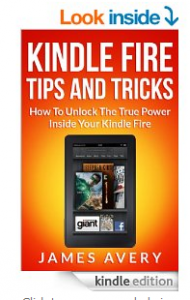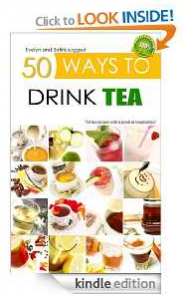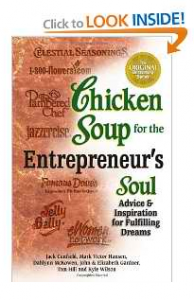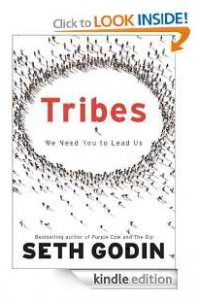 Short is the new trend in book publishing. And those authors publishing more than one book—usually two to four books—are the ones making money. So, it behooves you to consider how to get that first book blogged and start on a few more fast!
Short is the new trend in book publishing. And those authors publishing more than one book—usually two to four books—are the ones making money. So, it behooves you to consider how to get that first book blogged and start on a few more fast!
I can think of 6 types of short books you can blog fast and turn into ebooks. Short ebooks can be anywhere from 15 to 100 pages or 4,000-35,000 words in length. I’m not talking about your magnum opus. This is, indeed a short book you write fast.
How to Start
Create a content plan for you short ebook, and then don’t make more work for yourself than necessary. Keep your chapters short. Don’t write more than you have to. Blog your book; sit down each day and write 500 words and then post them on your blog. Make each chapter 1,500-2,500 words long, for example. Each chapter will consist of 3-5 blog posts averaging 500 words. If you have 10 chapters, you’ll end up with a 15,000-25,000-word book.
Whatever word processing program you use, keep an eye on your word count so you don’t overwrite. Remember: You are writing a short ebook fast.
Let’s take a look at the six types of short books you might consider blogging.
Tip Book
A tip book features a list of 10-101 tips. Normally, you find one per page, but some tip books offer just long lists of tips with many per page. Each tip might be just a sentence long or you can include a paragraph or two of explanation. This determines how many are included on the page.
Writing a tip book is pretty simple. Just compose a list of tips about something you know a lot about or that your customers or clients ask you about frequently.
- Can you tell prospective clients 20 ways to manage employees?
- Do you know 30 ways to save money on taxes?
- Can you think of 100 ways to generate more business leads?
If so, you’re an expert on that topic and can write a tip book.
expert on that topic and can write a tip book.
Writing or blogging a tip book will only take you as long as the number of tips (or steps or ways) you choose to include. Fifty tips, 50 days—unless you write or blog more posts per day or more tips per post.
Kindle Fire Tips and Tricks by James Avery, at just 45 pages, is a good example of a tip book.
List Book
If you can write a list, you can write a list book. Simply create a list of 10-101 things your clients or customers need to know on a subject and write a short informative essay to go with each item on your list. Or just write a list and publish it like Barbara Ann Kipfer did this with her book, 14,000 Things To Be Happy About or Scott Edelstein did with 1,818 Ways to Write Better & Get Published.
Consider the numerous things you know about your business, industry, product, or service.
- What do your clients want to know about this?
- What information could you put on a list that would benefit your customers?
- How many ways or things do you know that you can provide to add value to other people’s lives?
 Then sit down and make that list. Next, flesh it out with just a bit of content for each item—a paragraph or two or three. You can do this with one short writing session a day or a blog post a day. Before you know it, your list book will be written.
Then sit down and make that list. Next, flesh it out with just a bit of content for each item—a paragraph or two or three. You can do this with one short writing session a day or a blog post a day. Before you know it, your list book will be written.
Whatever your area of expertise, you can make a list about it—even tea drinking. For instance, 50 Ways to Drink Tea by Evelyn Sotiris, is on the Amazon bestseller list in the “Coffee & Tea” category.
Rx Book
Most of the books I edit or coach people to write fall into the prescriptive nonfiction category. This means they offer guidance or direction on a particular topic. They might provide 10 steps for better business practices, or 8 ways to better parenting or a guide to getting published, for example. The authors might be experts—or have interviewed experts—on how to lose weight, build a better solar home or get more business leads, for instance. If you can think of a topic, passion or interest, someone is an expert on it—maybe you.
These types of books are also called how-to books. Some examples of how-to books you could write include:
- a handbook (The Dog Owner’s Handbook)
- a guide book (A Guide to Setting up a Blog or 10 Ways to Help Your ADHD Child)
- a rule book (18 Rules for a Perfect Marriage)
- a step book (18 Steps to Writing a Business Plan)
 Just write down the steps, rules or ways—whatever how-to information—you want to include, and begin writing your advice. Offer your prescription to cure whatever ails your customers or clients.
Just write down the steps, rules or ways—whatever how-to information—you want to include, and begin writing your advice. Offer your prescription to cure whatever ails your customers or clients.
How to Manage in Times of Crisis by Ichac Adizes is under 100 pages and fits the bill when it comes to a short how to book. Try to focus your chapters on some easy prescriptive steps.
Anthology
Too busy to write your own book content? Solicit content from other experts. Ask 10-25 experts to contribute a chapter to your book. (Again, these could even be guest blog posts that you later put into an ebook.) Make sure all the chapters relate to one topic; in fact, plan out the content for the book, then ask the appropriate experts to contribute to your book. Give each of them:
- A specific topic
- A specific word count
- A deadline
- A request for rights to publish their work in your book
You will then add an introduction and a conclusion and a chapter of your own.
Anthologies have been made popular by Jack Canfield and Mark Victor Hansen’s Chicken Soup for the Soul Series.
One Big Idea
Do you use one central idea for your business? Or is there a “big idea” you’d love to get across to potential customers and clients or to the world at large—an idea you think would catapult you and your business to success? Take that one idea and blog a about it, and then turn it into a short book.
Explain your idea in a concise fashion. Then explore it further using:
- Anecdotes
- case studies
- reports
- statistics
- other evidence
Break your idea down into subheadings (your blog post titles) rather than chapters. You might include an introduction and conclusion.
your idea down into subheadings (your blog post titles) rather than chapters. You might include an introduction and conclusion.
This ends up reading like a manifesto a long article. Thus, it can feel less intimidating to some people.
Seth Godin in a master at writing short one big idea books, including Tribes, and The Dip.
Q & A Book
Last, but not least, you can compile a question and answer book. This book is exactly what it sounds like: a book of your customers’ or clients’ more common questions answered by you. Again, this is easy to blog—one question with an answer per day. A client of mine came up with 10 questions prospective clients most commonly ask; he actually discovered he had already answered most of these questions on his blog already and was, therefore, able to repurpose existing blog posts for a good portion of his book. He wrote the remaining portion. You can easily do this from scratch as well.
By employing one of these seven short-book structures, you’ll blog your book ( or many books) fast. You’ll then be ready to get it edited, have a cover designed, and convert it into an ebook format. And the more books you write, the more money you’ll make as an author.

I agree with all your given book structures, Nina! These are usually the best and quick options when starting an ebook.